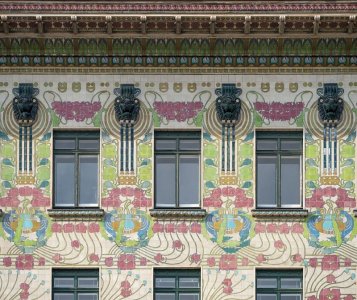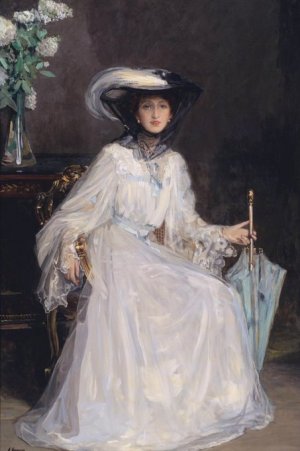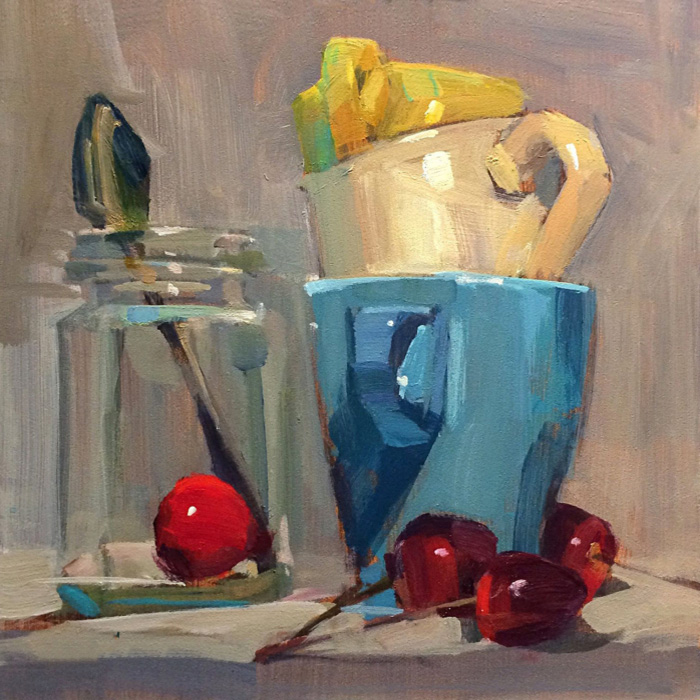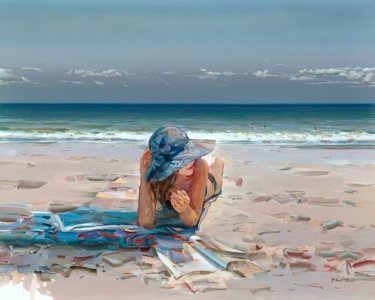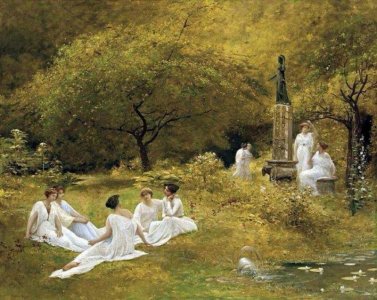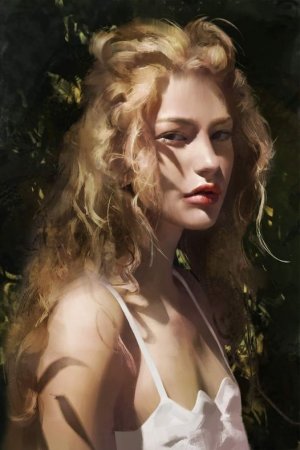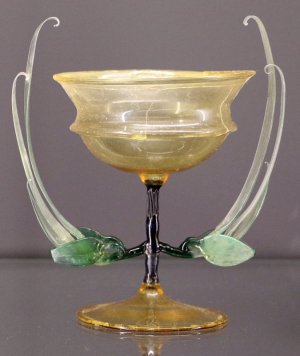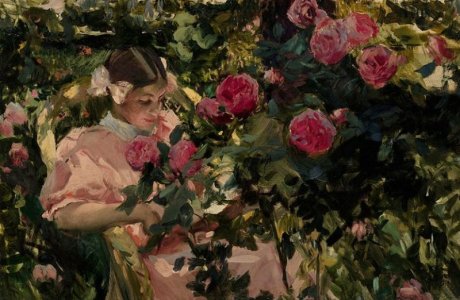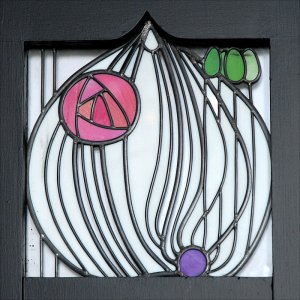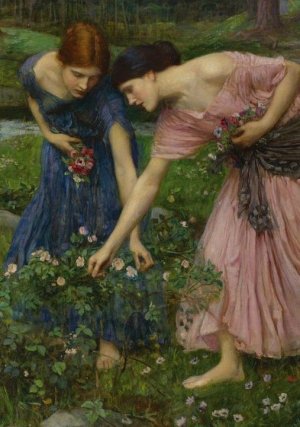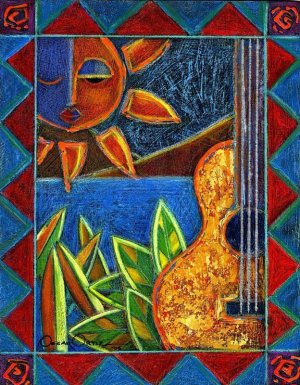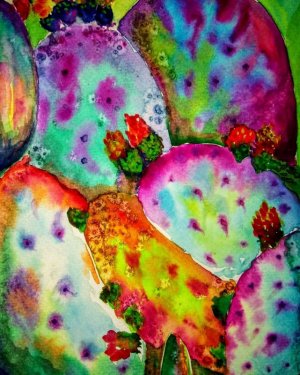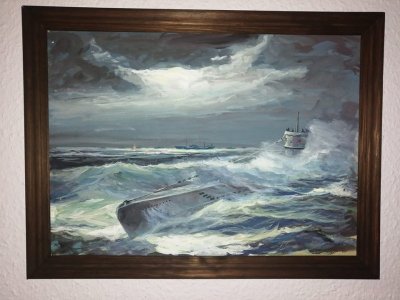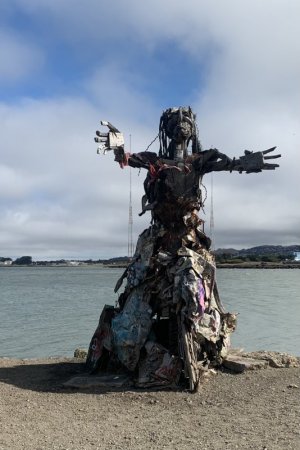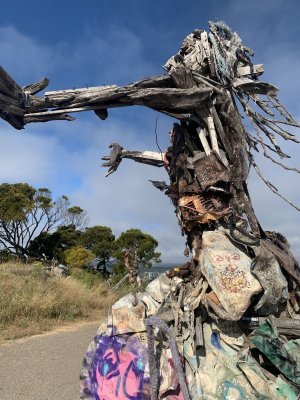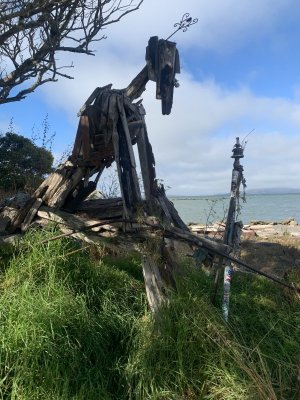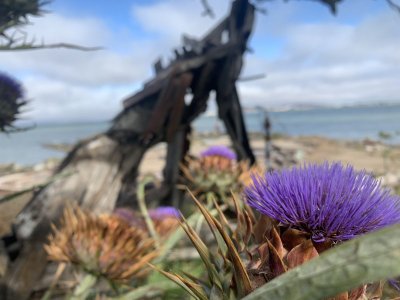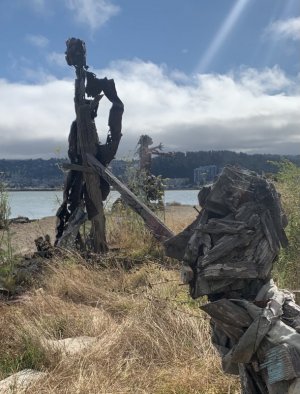You are using an out of date browser. It may not display this or other websites correctly.
You should upgrade or use an alternative browser.
You should upgrade or use an alternative browser.
Art, anything goes...
- Thread starter Wren
- Start date
Lara
Friend of the Arts
- Location
- Mid-Atlantic Coast
RadishRose
SF VIP
- Location
- Connecticut, USA
Daniel Keys
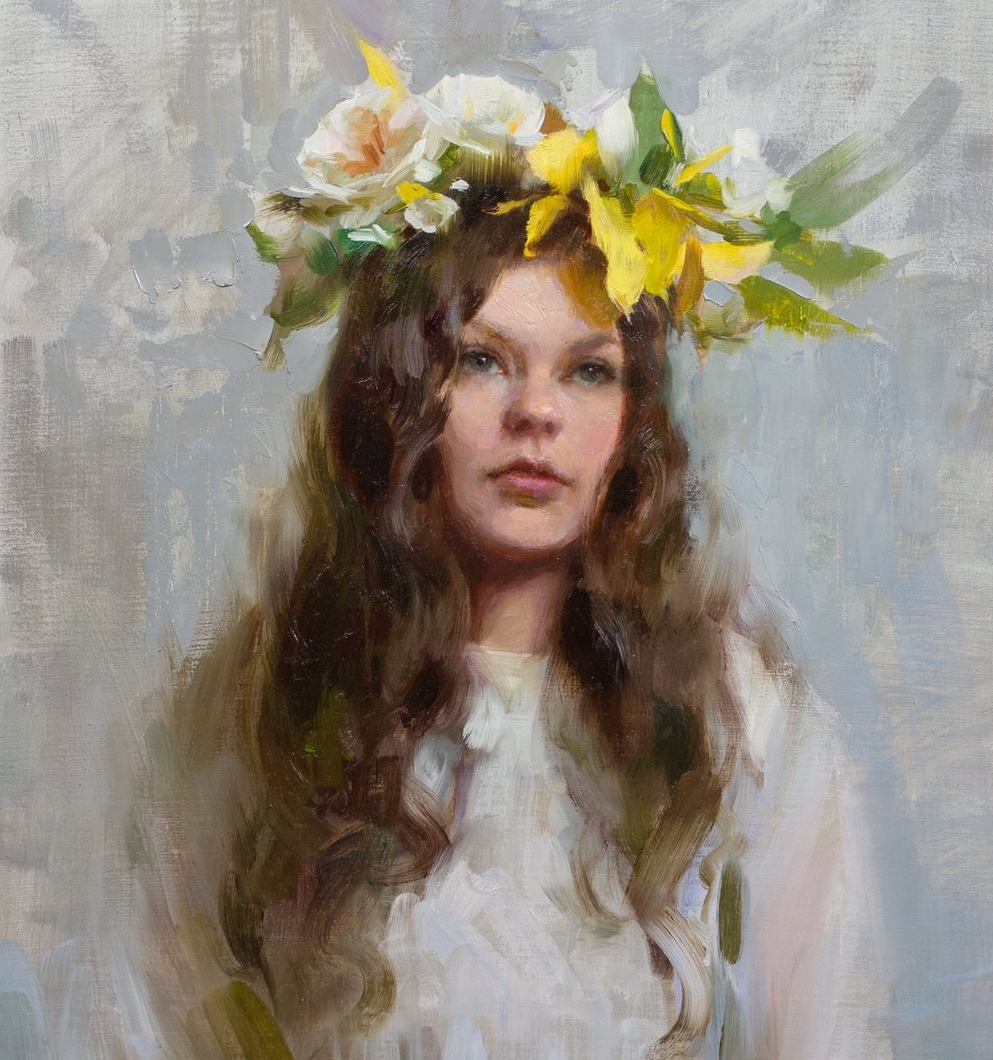

MarkD
Keeper of the Hounds & Garden
- Location
- San Francisco Bay Area
I went to the De Young in SF Saturday to see the Ansel Adams show which will be coming down soon. It actually included work from other photographers as well, including some earlier and some later. From their website:
Photos of photos make me think of biscotti somehow but here is what I got, starting with a couple of his photos I liked. Some are at odd angles to avoid the reflection of lighting. The first one he referred to as one of his Mona Lisa photos because of the number of reprints he produced and the way people flocked to stand in front of them on exhibit

He was local here around San Francisco and this next one shows the view of the Marin headlands just north and east of the Golden Gate Bridge.


And here are some from other photographers in the show.



This video I took of the long narrow atrium you pass under to enter the show appealed to me because of my plant/garden interest.
Ansel Adams in Our Time traces the visual legacy of photographer Ansel Adams (1902–1984), presenting some of his most-celebrated images, including Monolith—The Face of Half Dome (1927), Yosemite National Park (1927), and Moonrise, Hernandez, New Mexico (1941). The exhibition looks both backward and forward in time: Adams’s enduring photographs are presented alongside prints by some of the 19th-century government-survey photographers who influenced him, as well as work by contemporary artists—such as Mark Klett, Abelardo Morell, Catherine Opie, and Trevor Paglen—whose modern-day concerns regarding the environment, land rights, and use and misuse of natural resources point directly to Adams’s legacy. His images of the western American landscape constitute a legacy, one that continues to inspire and provoke, as photographers today engage anew with the sites and subjects that occupied Adams throughout his life.
Photos of photos make me think of biscotti somehow but here is what I got, starting with a couple of his photos I liked. Some are at odd angles to avoid the reflection of lighting. The first one he referred to as one of his Mona Lisa photos because of the number of reprints he produced and the way people flocked to stand in front of them on exhibit

He was local here around San Francisco and this next one shows the view of the Marin headlands just north and east of the Golden Gate Bridge.


And here are some from other photographers in the show.



This video I took of the long narrow atrium you pass under to enter the show appealed to me because of my plant/garden interest.
RadishRose
SF VIP
- Location
- Connecticut, USA
MarkD
Keeper of the Hounds & Garden
- Location
- San Francisco Bay Area
My wife has a piece in a show at the Seager/Grey gallery in Mill Valley which is one of my favorites it is a smaller version of one she first wove as part of commission for a then new Pittsburg courthouse. I always enjoy the work they exhibit. The one in the show was woven on a Jacquard hand loom as the ones for the commission probably were too. https://seagergray.com Hers is the one in the top left of the front page, and like the others also larger below. Their photo is definitely better than the one I took last night.


A friend asked me about the origins of the photo which the weaving is based on and I told them about the commission she made for that Pittsburg courthouse. She explained to a woman at our local bakery about the project she was working on and the kinds of photos she wanted. The other photos she already had included her own son (second from left) and two form faculty and students where she was teaching and obtained permission to include this photo that the woman had taken of her daughter (the one on the left). I think it is the strongest one in the piece but the commission is pretty cool too.. This link is to the information about that piece commissioned by the US government which includes two pics of it installed as well as this nice but long description of the piece under More Information:


A friend asked me about the origins of the photo which the weaving is based on and I told them about the commission she made for that Pittsburg courthouse. She explained to a woman at our local bakery about the project she was working on and the kinds of photos she wanted. The other photos she already had included her own son (second from left) and two form faculty and students where she was teaching and obtained permission to include this photo that the woman had taken of her daughter (the one on the left). I think it is the strongest one in the piece but the commission is pretty cool too.. This link is to the information about that piece commissioned by the US government which includes two pics of it installed as well as this nice but long description of the piece under More Information:
- Sons and Daughters, Lia Cook’s innovative hand-woven textile, adds a human element to the United States Courthouse and Post Office. The artist drew on a long tradition found in both photography and painting when designing Sons and Daughters. The artwork is composed of four equally-sized vertical panels attached to one another. Each features an image derived from a snapshot of a child that has been cropped so that the background is largely eliminated and emphasis placed on the face. While all the children are close to the picture plane, each is at a slightly different distance, which creates an illusion of depth and movement both across the four panels and within the depicted space. The girl portrayed in the left panel is most fully visible; the top of her head is cropped, as is her right side. Turned at an almost three-quarter angle, her shoulder, much of her torso, and portions of her hands are included in the picture. The little boy in the next panel seems closer to the viewer; his head, tilted a bit, is also cut off on his right side by the panel’s edge, but it clears the top, and only a portion of his left shoulder can be seen. The sense of forward motion culminates in the third section in which a girl’s face nearly fills the frame. Only a small part of the right side of her head is unseen, and her chin is near the bottom of the panel. The fourth panel introduces a new dynamic motion—in contrast to the other three, the boy enters the frame from the right. The left side of his face falls beyond the picture’s edge and he is positioned further from the foreground, so that like the girl in the first panel, more of his body is included in the picture. Seen as part of an overall composition, his placement creates an upward movement and, with the image in the first panel, frames the center sections of the tapestry.
Comprehension of the images woven into Sons and Daughters changes depending on the viewer’s distance from the tapestry. Up close, only the abstract pointillist patterns of color of the fabric’s weft yarns are visible, creating an effect that recalls the neo-impressionist landscapes of Georges Seurat or the photorealist portraits of Chuck Close. Seen from farther away, the children’s faces emerge from the woven surface, and although the images derive from photographs, the details are muted and slightly granulated as if seen on a fuzzy television screen. Each image depicts an intimate, albeit momentary encounter between child and photographer and, by extension, child and viewer. They are fully aware of being observed and candidly confront the viewer in an inquisitive, yet playful manner. The oversized scale of the images adds to the children’s enveloping presence and to the intimate nature of the experience.
While the gender of the children is apparent, little else is evident. There are two girls and two boys, all are young and appear to have different ethnic backgrounds. We cannot tell if they are rich or poor. Even the bits of clothing that are visible provide little information about when and where the photos may have been shot. Such conscious stripping away of contextual information by Cook leaves us in the presence of the children themselves—sons and daughters—who may represent the growing diversity of the American society, as well as its future.
Additional meaning is brought to the work with its placement in the lobby of a federal courthouse. Every person convicted of a crime was once a child, just like these children. Even though each one of us begins life with a proverbial clean slate, personal circumstances and actions determine whether we end up as a member of the jury, a defendant on trial, or the presiding judge. Cook’s portrayal of these impressionable children serves as an impetus to reflect on our own choices in life.
Cook designed the overall work so that each panel is the same size and no child is visually or compositionally emphasized over another. Rather than one focal point, there are four, which can be interpreted symbolically: regardless of gender, race, or class, each person is viewed equally under law and is treated as such in a federal courtroom. Both the subject and the composition reflect Cook’s hope “that people involved in the court procedures will think about the future of all our children and make the connection that ultimately the legal system will not only determine their particular case or issue, but that those decisions and actions will affect future generations.”
This used to be my PC desktop.
RadishRose
SF VIP
- Location
- Connecticut, USA
Ansel Adams was a genius photographer.I went to the De Young in SF Saturday to see the Ansel Adams show which will be coming down soon. It actually included work from other photographers as well, including some earlier and some later. From their website:
Photos of photos make me think of biscotti somehow but here is what I got, starting with a couple of his photos I liked. Some are at odd angles to avoid the reflection of lighting. The first one he referred to as one of his Mona Lisa photos because of the number of reprints he produced and the way people flocked to stand in front of them on exhibit

He was local here around San Francisco and this next one shows the view of the Marin headlands just north and east of the Golden Gate Bridge.


And here are some from other photographers in the show.



This video I took of the long narrow atrium you pass under to enter the show appealed to me because of my plant/garden interest.
RadishRose
SF VIP
- Location
- Connecticut, USA
Sotheby’s Continues Streak of Magritte Sales With a ‘Masked-Apples’ Work for US $11 Million
Lara
Friend of the Arts
- Location
- Mid-Atlantic Coast
Lara
Friend of the Arts
- Location
- Mid-Atlantic Coast
RadishRose
SF VIP
- Location
- Connecticut, USA
Wayne
Senior Member
RadishRose
SF VIP
- Location
- Connecticut, USA
Very powerful! Beautiful, too.One of my uncle's paintings from long ago, click on it to enlarge it.
Lara
Friend of the Arts
- Location
- Mid-Atlantic Coast
RadishRose
SF VIP
- Location
- Connecticut, USA
Rafael Escamilla, Mountain Festival, acrylic on canvas, 36” x 60”, 1997


Lara
Friend of the Arts
- Location
- Mid-Atlantic Coast
Wayne
Senior Member
MarkD
Keeper of the Hounds & Garden
- Location
- San Francisco Bay Area



